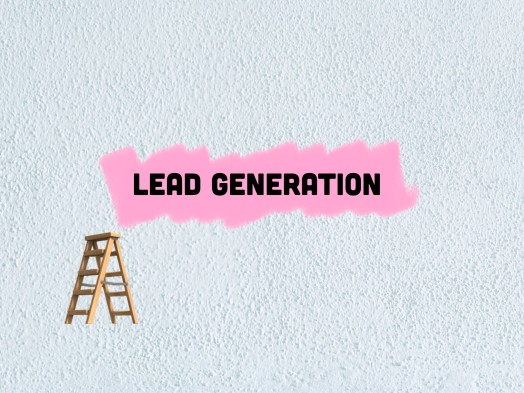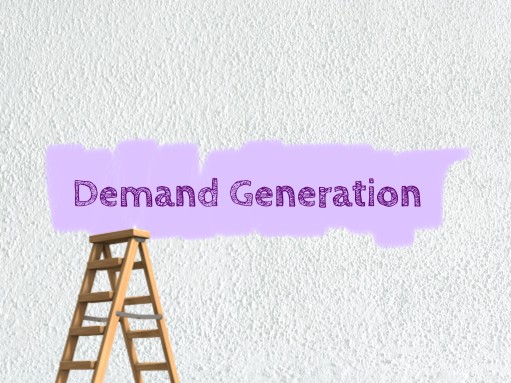B2B Demand Generation Vs Lead Generation | The Ins and Outs
What is demand generation?
Demand is the other half of the core business principle of supply and demand. Before you get to the supply part of things, you need customers interested in your product or service. The more people are interested in what you offer, the higher the demand. Demand generation is how you let potential customers know that your product or service exists. Where there is demand, there are bound to be sales. Without demand generation, there are no leads to be collected. Demand generation can be a simple action: following you on social media, sharing your page, or liking your page. This is the top of the funnel activity. It raises awareness, which would later move to lead generation. It can be in problem awareness, solution awareness, and product awareness. The product awareness part is where lead generation comes into play.
What is lead generation?
Lead generation connects potential customers to a product or service they might be interested in. It finds potential customers who are ready to buy. It can also refer to marketing activities that help generate potential sales for salespeople to follow up on and close. Lead generation involves the exchange of contact details for something of value. The middle of the funnel activity usually helps move prospects from being aware of a company to becoming qualified buyers. This is where your sales team comes into play.

Demand Generation Techniques and Examples
How do you generate demand for your product or service? It depends on your industry and the products or services you offer. Some standard demand generation techniques include:
1. Creating compelling content: Blog posts, ebooks, infographics, case studies, white papers, etc. Content should be engaging enough so that readers will want to learn more. If it’s not interesting, no one will read it.
2. Offering free samples: Give potential buyers a sample of your product or service. You can either give them an email address where they can download it or even send them a physical sample.
3. Promoting events: Hosting an event where your target audience can meet with you face-to-face. This is often done through trade shows, conferences, webinars, seminars, etc.
4. Building relationships: This includes networking, referrals, partnerships, sponsorships, etc. These are all ways of getting your name out there and building trust among your target market.
5. Advertising: There are many different types of advertising, including online ads, print ads, radio ads, TV ads, etc.
6. Direct mail: Send direct mail campaigns to your target market. They may be targeted by emails, postcards, brochures, catalogues, etc.
7. Social media marketing: Use social media channels like Facebook, Twitter, LinkedIn, Instagram, Pinterest, YouTube, etc., to promote yourself and your brand.
8. Podcasting: Record audio podcasts about your niche. Upload them to iTunes, SoundCloud, Stitcher, Google Play, Spotify, etc.
9. Influencer Marketing: Find influencers in your niche and pay them to share your message.

Lead Generation Techniques and Examples
Now let’s look at some specific examples of Lead generation techniques. Here are some popular ones:
1. Paid Search: In most industries, paid search offers one of the best ways to generate leads.
Blogging: Write blogs about topics related to your niche. Post links to relevant articles from reputable sources. Comment on others’ blogs to build credibility.
2. Email marketing: Creating valuable and helpful content and sharing with your target audience via email marketing.
Email outreach can be cold or warm depending on the stage of your company.
3. Advertising on Existing Platforms: Every industry has specific industry platforms people trust and uses to find useful information. For example, Xero is a trusted platform for accountants, therefore if your company is targeting accountants, it makes sense to target the Xero marketplace. The same is true for the Shopify, Magento, Stackoverflow, AWS, and Azure marketplaces.
4. Review websites: Most complex purchases go through several stages of consideration before buyers make a decision, Review websites offer a great source of leads for most B2B companies. Sites such as Software Advice, G2, and Capterra to name a few are all good sources.
6. Social Media Marketing: Promote your business on social media platforms like Facebook, Twitter, Linkedin, and Instagram using Paid or Organic methods.
8. Referral Programs: Offer rewards to people referred by friends or colleagues.
9. Trade Shows: Set up booths at local trade shows to network with other businesses.

10. Webinars: Have live presentations via webcam or phone. Invite participants to ask questions during the presentation.
11. Surveys: Ask your target market questions using surveys. The results will help you understand their needs better. The leads from the surveys can also become your customers in the future.
You can introduce gated content. This is content that only those who complete a specific step in your process will access the rest of the content. For example, offer a free ebook but require visitors to enter their email addresses before downloading it.
Gated content works well for lead generation because it gives you more control over your funnel. It also helps you avoid giving away too much information to random strangers.
Demand generation vs lead generation | Are they the same thing?
Demand generation and lead generation are closely related in B2B. In B2B, all lead generation is demand generation. Lead generation involves generating interest in products and services to pitch them. This means driving traffic to relevant pages such as social media without intending to pitch a product.
So how do you know if you’re doing demand generation or lead generation? If you want to generate leads for sales, you need to generate interest in your offer. Be present where your customers are and personalise your approach where possible. That means that it should be easy for prospects to relate to you and your company. This comes from taking the time to learn more about their interests and challenges. And finally, you’ll want to make sure that your content is always valuable so that you don’t become irrelevant over time.

Demand generation tends to be much shorter than lead gen. This is another critical difference between them. For example, a campaign to promote a new software application might run ads for 2-3 months before seeing great signs of success. Once you see some initial traction, you can continue to scale up your efforts until you reach your goals.
If you want to increase your brand awareness, consider running campaigns that include demand generation and lead gen. This way, you can get the word out quickly while still building a relationship with potential customers.
Combining Lead Generation with Demand Generation
Demand generation and lead generation work in tandem. As we mentioned before, there are no leads without demand generation. Demand generation efforts do not focus on buyer intent. We start by doing “problem-focused” keyword research when creating demand generation content. For B2B, this would involve creating content addressing issues that businesses you serve are facing and how you solve them. This ultimate goal is to equip potential leads to realise they have this issue and associate your product with the solution. White papers are one of the best ways to achieve this.
Once a piece of content has worked its magic, your marketing team can move these qualified prospects a little further down the sales funnel.
Lead Qualification
Marketing Qualified Leads
The first step in generating qualified leads is to qualify them. This means identifying which ones are interested in your product or service based on their profile. You can do this by looking at their information when filling out forms online. For example, if someone has filled out a form with their email address, you can use it to send them emails with offers and promotions. If someone has provided their phone number, you can call them to ask questions and see if they would like to receive more information.
A marketing qualified lead (MQL) is a person who meets specific criteria set by marketers. MQLs are often a starting point for further prospecting through nurturing campaigns. They may fill out a form, give their contact info via social media, or even respond to a direct mail piece sent by a company. Marketing qualified leads are not necessarily interested in purchasing yet. Companies start engaging with these leads. They usually become interested in learning more about the company and receiving more information.
Sales Qualified Leads
In B2B, a sales qualified lead (SQL) is a person who has expressed interest in a specific product or service but hasn’t made any commitment to buy yet. A SQL could sign up for a trial period, request more information, or even make a buy later. Sales Qualified Leads represent possible future sales. Companies focus on demand generation strategies for this audience.
Lead Nurturing
Nurturing is the process of nurturing leads until they become buyers. It involves following up with these leads over time to make sure they are still interested in your products or services. Some companies will nurture leads for months before they convert into paying clients. Others will only wait a few weeks. The key here is to treat every lead as if it will turn into a sale.
How do we know if our B2B demand generation strategy is working?
As mentioned before, demand generation tactics for B2B marketers focus on the type of content that raises brand awareness. This could include social media posts and any piece of content that cannot be tied directly to a return on investment. As such, we would want to measure things such as:
- Number of followers
- People signing up for your newsletter
- Number of people joining your webinars
- Level on engagement on your posts
- Open rates on your emails
If there is a constant uptick in these things, your strategy is working. You can also add other KPIs to the list above to tailor it to your business.
Cost of acquisition
Although it may be long-winded, a good demand generation campaign will likely reduce your acquisition cost. The value you provide to your buyer persona before they hit the sales funnel reduces their time in the sales pipeline. By reducing the time spent finding new customers, you can spend less money acquiring them.
Customer journey
Pipeline opportunities are viewed in a broader sense. While some businesses will go straight to the sales funnel. A good marketing strategy first brings attention through demand. Prospective customers are introduced to the brand even before knowing they may need the solution. We encouraged B2B businesses to create an even broader demand generation plan.
